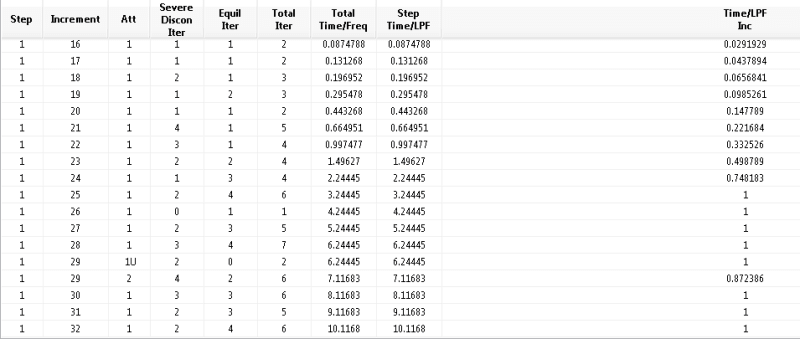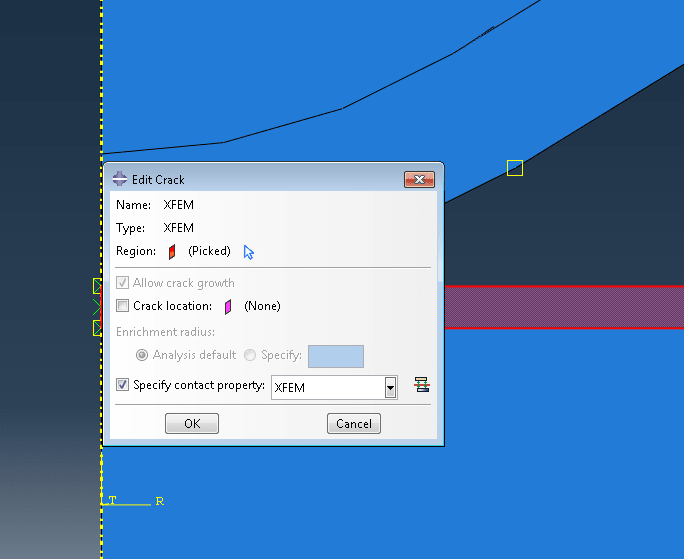Hey,
i am currently simulating the rockwell test on a Diamond coated Substrate (2D). I am interested in the Delamination process, but also the crack Initiation and Propagation within the Coating. I managed to simulate a crack in the Coating using the XFEM enrivonment, but unfortunately the Simulation Aborts after 2 cells have been seperated by the crack. I would like the Simulation to Keep running until the end - or at least a bit longer so i can see how the crack develops over time. The error Abaqus gives me is just the following : System error in timeup. Dtime=zero
I am using Maxps Damage, Power Law for Damage Evolution and a stabilization coefficient.
I would like to know what are the Parameters for me to Change in order for the Simulation to Keep running. I Linked you a Picture of the crack just before the Job Aborts.
Thank you a lot in advance
i am currently simulating the rockwell test on a Diamond coated Substrate (2D). I am interested in the Delamination process, but also the crack Initiation and Propagation within the Coating. I managed to simulate a crack in the Coating using the XFEM enrivonment, but unfortunately the Simulation Aborts after 2 cells have been seperated by the crack. I would like the Simulation to Keep running until the end - or at least a bit longer so i can see how the crack develops over time. The error Abaqus gives me is just the following : System error in timeup. Dtime=zero
I am using Maxps Damage, Power Law for Damage Evolution and a stabilization coefficient.
I would like to know what are the Parameters for me to Change in order for the Simulation to Keep running. I Linked you a Picture of the crack just before the Job Aborts.
Thank you a lot in advance


